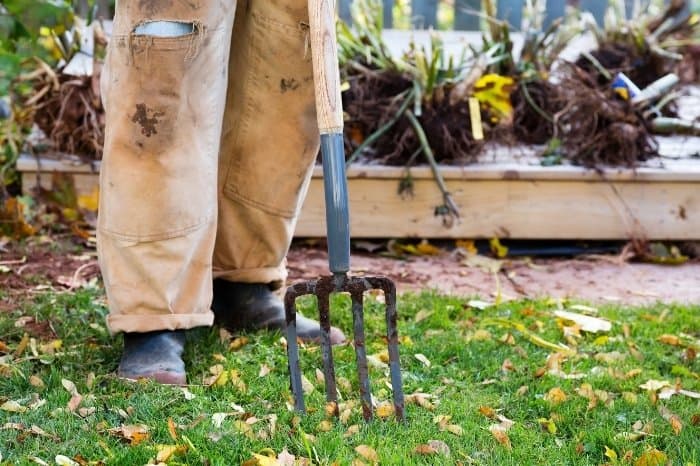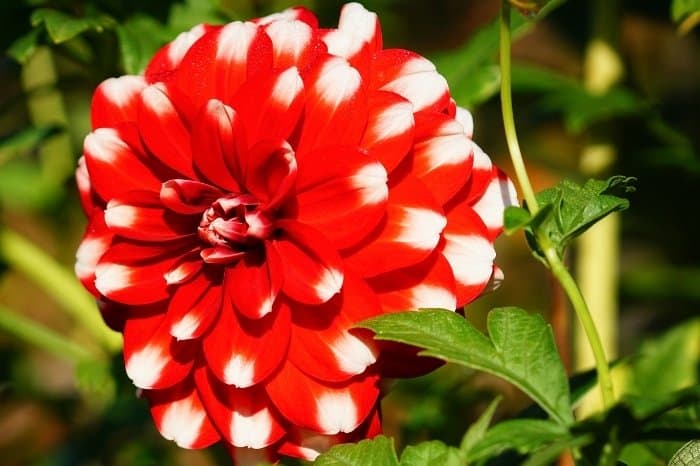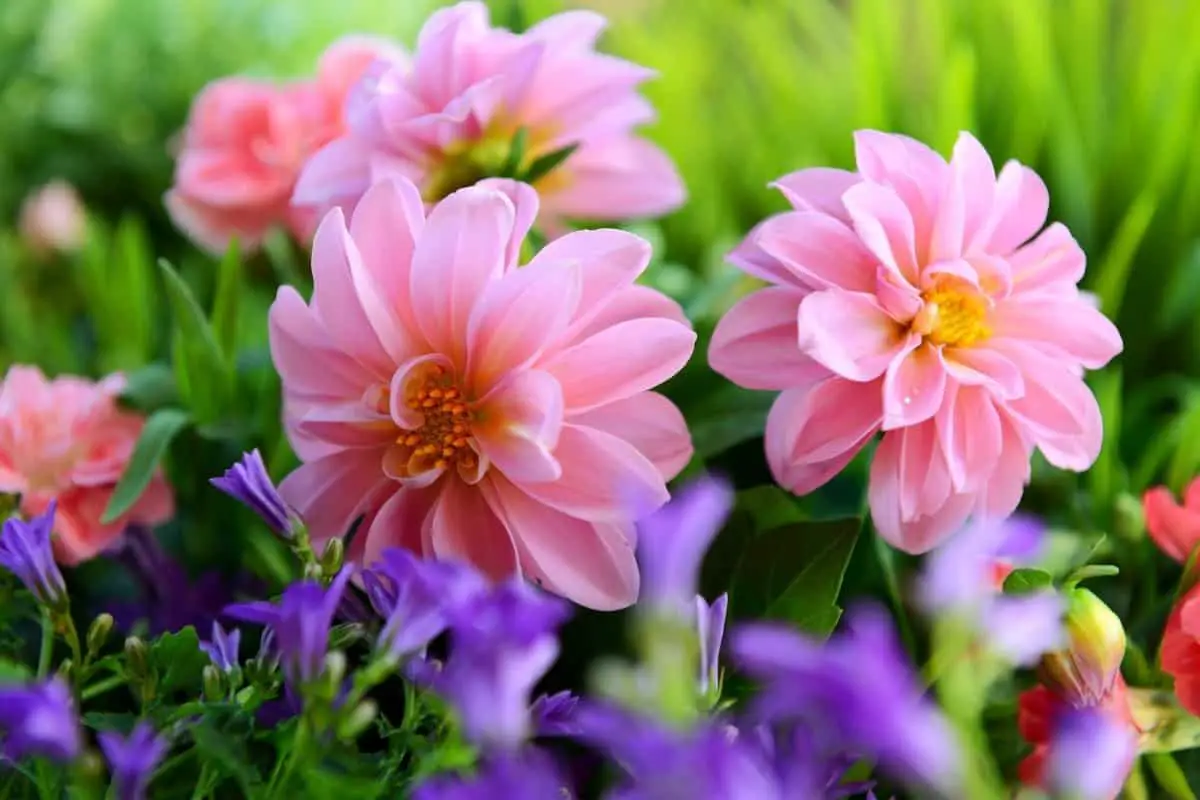Last Updated on May 29, 2022 by Cinthia
Dahlias are some of the most beautiful flowers to display but are difficult to overwinter; can you leave dahlias in the ground over winter.
Dahlias are every gardener’s dream! They have a wide variety of colors and sizes that you can choose from when you growing.
Dahlia tubers are not winter resistant and will rot in the ground in most regions if not week is taken care of.
In freezing temperature, they split, and mold in soggy soil. It is best if you could dig them up, preserve them indoors during the cold season, and then replant in spring.
If not properly stored, dahlia tubers can dry out or rot or destroying your precious dahlias for the next planting season.
In addition, to be honest, dahlia tubers are not cheap to buy, so preserving your own for the next harvest is critical.
We will show you how to take care of your dahlias during winter, so they come back again in the next spring, in this article.
Can You Leave Dahlias In The Ground Over Winter?
Overwintering dahlias is not possible in zones 8 or higher; you cannot keep your dahlias tubers in the ground over winter, they will rot or die. To preserve these tubers, you must dig them out before the first hard frost.
Once removed, store dahlias in a dark room or a heated garage or cool basement. Do not expose them to cold temperatures. You will need to store them in a cardboard box, or a large plastic container.
How To Overwinter Dahlias
Dahlias display a colorful bloom throughout summer and autumn. Once the frost arrives, it is time to get ready to overwinter them.
Dahlias are not frost resistant, when temperatures get lower, the leaves and remaining blooms collapse in a big heap and begin to die. The tubers grow underground and they are the best to save. Do dahlias come back every year? Yes, when provided with the right care and grown in the right zones, they can live and perform again.
Some areas require that you dig up your dahlia tubers and store them to replant them in the following spring while others in milder areas leave them in the ground.
Leave Dahlias In The Ground Over Winter
If your soil is well-drained and frost does not penetrate too deeply, your tubers will come through the winter unharmed. You can help your tubers by mulching the surface with a deep covering of composted bark, leaf mound, or bracken applied after the foliage is cut down to ground level.
If your soil is wet, clay, or soggy, your dahlias will not likely survive in the ground. It is best to lift them and store them in a frost-free place until the next spring.
Dr. Earth GL61100518430 Fertilizer & Soil 707P Organic 8 Bud & Bloom Fertilizer
Dig Your Dahlias Before Winter
If you choose to dig them up and store them, it is better to preserve them for future replanting. Cut back the stems to a few centimeters above the ground and remove carefully with a fork ensuring you don’t damage the delicate tubers.
Remove as much soil as you can from the tuber but don’t wash them. If the soil is too sticky use a stick to remove the soil to ensure you leave them as natural as possible. Washing them and not drying properly will cause the moisture to attract mold to grow and destroy the tubers.
As you store your tubers, ensure they have good ventilation and a frost-free place. Freezing temperatures while indoors will kill them.
Dust your dahlias with yellow Sulphur to prevent fungal infections. This powder acts as a plant nutrient and soil acidifier and can still be used as a preventative powder to your dahlia tubers.
Lay your tuners in trays lined with clean newspaper or wrap each loosely with a newspaper. Store them in a dry, frost-free place with good air circulation. Once stored, check them regularly to see if there are any signs of rot. Discard those with rot signs immediately you notice them.

When The Next Spring Comes
When spring arrives, get ready to plant your tubers again. You can choose to start them indoors in pots and then plant them outdoors when the soil warms up.
Don’t plant outdoors too early or they will be harmed by frost. Dahlias grow best in an open sunny position but like a shelter from the wind that can damage their stems.
They thrive on well-drained soils with plenty of organic matter around them. A slow-release fertilizer is great to add or plenty of organic matter around them when planting.
Summer And Fall Care
Once planted in the spring dahlias will thrive and start growing right away. They are not problematic plants.
During summer, fertilize your dahlias with a water-soluble organic fertilizer specifically formulated for flowers. Avoid using high-nitrogen fertilizer because it will give you lots of foliage growth with little flowering.
Mulch your plants with straw or shredded bark to keep weeds away and help the soil retain moisture.

Water regularly keeps them from drying especially during the hot summer period.
Once they bloom, cut the flowers for indoor flower arrangements and remove the old blossoms to encourage more blooms and branching.
Dahlias have a short vase life and make gorgeous bouquets.
Conclusion
Are dahlias perennials or annuals? Dahlias are both. They can be grown as perennials in areas where frost is mild and annuals in areas where the temperatures get to freezing points.
Once you know the climate of your area, you can choose what type of dahlias to grow and how to overwinter them.
Bottom line, dahlias are beautiful flowers that you can’t afford to not grow if you love beautiful flowers. Though they have a shorter shelf life once cut and out in a vase, they still bloom more and you can keep cutting them to encourage more blooms to decorate your house.
Besides that, dahlias are friendly flowers, easy to grow and thrive when given the right conditions. Why not try growing your own and enjoy their beautiful blooms all through summer and fall. Happy dahlia gardening!
Caroline is a gardener who loves to get down to the nitty–gritty of gardening. She proudly proclaims herself as a ‘dirt worshipper‘ and can often be found deep in the garden, covered in soil and singing to her plants. As a self–proclaimed ‘plant whisperer‘, Caroline believes that plants need love and attention just like any other living thing, and she loves to give them both. When she‘s not tending to her garden, you can often find her researching the latest gardening trends, or teaching others how to make their gardens thrive



